Vinegar cleaning hacks – who knew this humble kitchen staple could be your secret weapon to a sparkling clean home? I’m always on the lookout for simple, effective, and budget-friendly ways to keep my house looking its best, and let me tell you, vinegar has become my go-to solution for so many cleaning dilemmas.
For centuries, vinegar has been more than just a condiment. Ancient civilizations, from the Babylonians to the Romans, recognized its potent cleaning and preserving properties. They used it to disinfect wounds, clean surfaces, and even preserve food. Talk about a multi-tasker! Today, we’re rediscovering the magic of this age-old remedy, ditching harsh chemicals for a natural and effective alternative.
Let’s face it, nobody enjoys spending hours scrubbing and cleaning. We all crave a clean and healthy living space, but the thought of tackling tough stains and grime can be daunting. That’s where these vinegar cleaning hacks come in! I’m going to share some of my favorite DIY tricks that will save you time, money, and effort, all while keeping your home fresh and chemical-free. Get ready to unlock the cleaning power of vinegar and transform your home into a sparkling oasis!
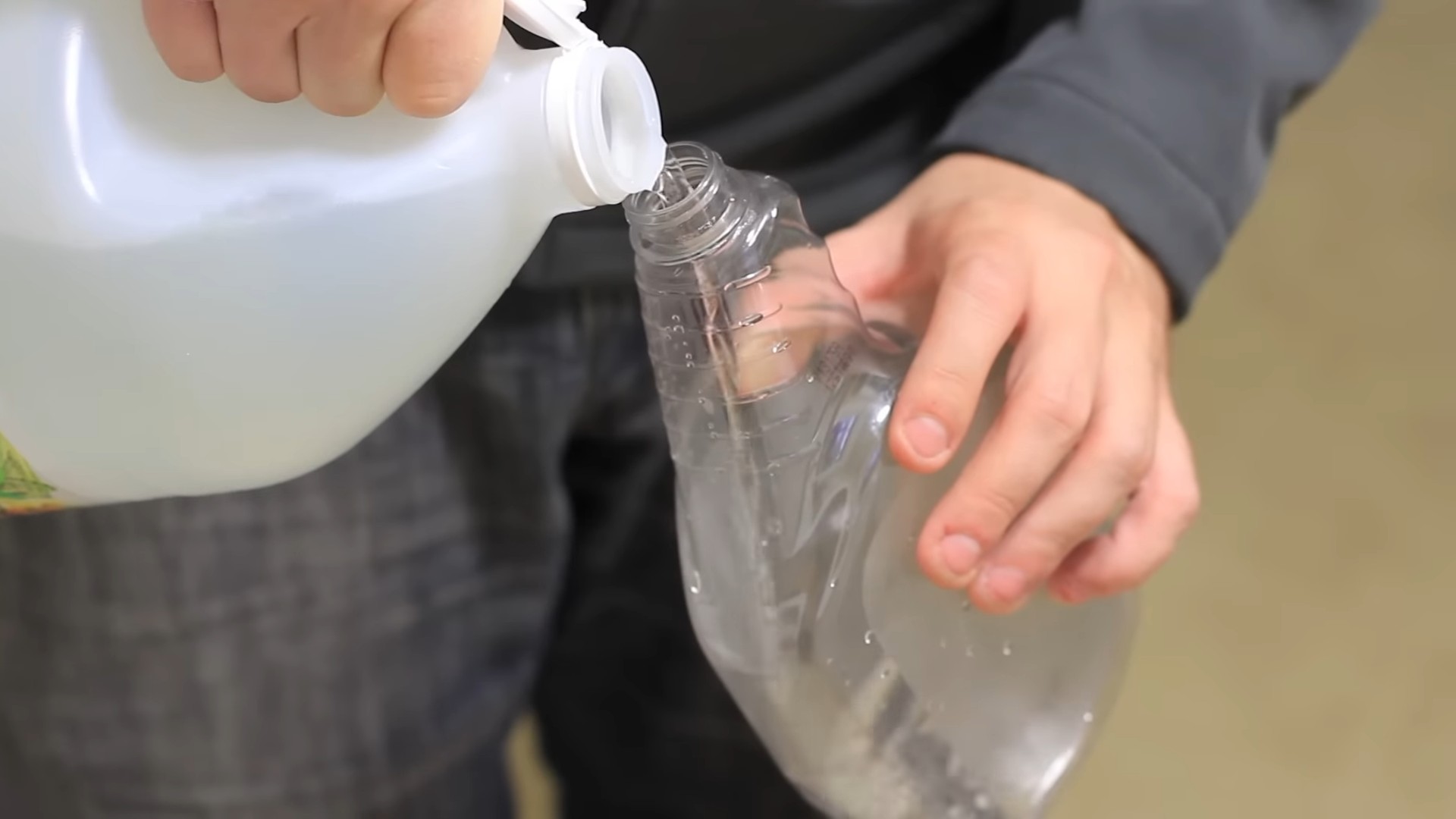
Unlocking the Cleaning Power of Vinegar: My Favorite DIY Hacks
Vinegar. It’s not just for salads anymore! I’ve discovered that this humble kitchen staple is a cleaning powerhouse, and I’m excited to share my favorite DIY vinegar cleaning hacks with you. It’s cheap, effective, and eco-friendly – what’s not to love? Let’s dive in!
General Vinegar Cleaning Tips
Before we get into the specifics, here are a few general tips to keep in mind when using vinegar for cleaning:
* Dilution is Key: Always dilute vinegar with water. A 50/50 solution is generally a good starting point for most cleaning tasks. For tougher jobs, you can use a stronger concentration, but always test it in an inconspicuous area first.
* White Distilled Vinegar is Your Best Friend: While other types of vinegar exist, white distilled vinegar is the most versatile and effective for cleaning. It’s also the least expensive!
* Avoid Certain Surfaces: Don’t use vinegar on natural stone surfaces like marble or granite, as it can etch and damage them. Also, avoid using it on waxed furniture, as it can strip the wax.
* Neutralize Odors: Vinegar has a strong smell, but it dissipates quickly. If you’re sensitive to the odor, you can add a few drops of your favorite essential oil to your cleaning solution. Lemon, lavender, and tea tree oil are all great options.
* Test First: Before cleaning an entire surface, always test your vinegar solution in a small, hidden area to ensure it doesn’t cause any discoloration or damage.
Cleaning Your Kitchen with Vinegar
The kitchen is a breeding ground for grime and bacteria, but vinegar can help you keep it sparkling clean.
Cleaning Your Microwave
Microwaves can get pretty gross, pretty fast. Splatters, spills, and lingering odors are all common problems. Here’s how I use vinegar to clean mine:
1. Prepare the Solution: Fill a microwave-safe bowl with 1 cup of water and 1/2 cup of white distilled vinegar.
2. Microwave It: Place the bowl in the microwave and heat it on high for 5-7 minutes, or until the solution is boiling and the microwave is filled with steam.
3. Let it Sit: Leave the microwave door closed for another 5-10 minutes to allow the steam to loosen any stuck-on food particles.
4. Wipe it Down: Carefully remove the bowl (it will be hot!) and use a damp cloth or sponge to wipe down the interior of the microwave. The grime should come off easily.
5. Stubborn Spots: For any stubborn spots, dip your cloth or sponge in the vinegar solution and scrub gently.
6. Ventilate: Leave the microwave door open for a few minutes to air it out and eliminate any lingering vinegar smell.
Cleaning Your Coffee Maker
Coffee makers can accumulate mineral deposits over time, which can affect the taste of your coffee. Vinegar is a great way to descale your coffee maker and keep it running smoothly.
1. Prepare the Solution: Fill the water reservoir of your coffee maker with a 50/50 solution of white distilled vinegar and water.
2. Brew It: Run the coffee maker through a full brewing cycle.
3. Rinse It: After the brewing cycle is complete, discard the vinegar solution and fill the water reservoir with fresh water.
4. Run Again: Run the coffee maker through two or three more brewing cycles with fresh water to rinse away any remaining vinegar.
5. Enjoy Fresh Coffee: Your coffee maker should now be clean and ready to brew delicious coffee!
Cleaning Your Dishwasher
Dishwashers can also accumulate mineral deposits and food debris, which can affect their cleaning performance. Vinegar can help you keep your dishwasher clean and efficient.
1. Empty the Dishwasher: Make sure your dishwasher is empty before you start.
2. Vinegar Bath: Place a dishwasher-safe cup or bowl filled with 1 cup of white distilled vinegar on the top rack of the dishwasher.
3. Run a Cycle: Run the dishwasher on a normal cycle with hot water.
4. Repeat Monthly: I like to do this once a month to keep my dishwasher in tip-top shape.
Cleaning Cutting Boards
Cutting boards, especially wooden ones, can harbor bacteria. Vinegar’s antibacterial properties make it a great choice for cleaning them.
1. Rinse the Board: After using your cutting board, rinse it with warm water.
2. Vinegar Spray: Spray the cutting board with undiluted white distilled vinegar.
3. Let it Sit: Let the vinegar sit on the board for a few minutes to disinfect it.
4. Wipe Clean: Wipe the board clean with a damp cloth or sponge.
5. Air Dry: Allow the cutting board to air dry completely.
Cleaning Your Bathroom with Vinegar
The bathroom is another area where vinegar can really shine. It’s great for removing soap scum, hard water stains, and mildew.
Cleaning Showerheads
Showerheads can get clogged with mineral deposits, which can reduce water pressure. Here’s how I use vinegar to clean mine:
1. Vinegar Soak: Fill a plastic bag with white distilled vinegar.
2. Secure the Bag: Place the bag over the showerhead, making sure the showerhead is completely submerged in the vinegar. Secure the bag with a rubber band or twist tie.
3. Soak Overnight: Let the showerhead soak in the vinegar overnight.
4. Remove and Rinse: Remove the bag and rinse the showerhead thoroughly with water.
5. Scrub if Needed: If there are any stubborn deposits, use an old toothbrush to scrub them away.
Cleaning Shower Doors and Walls
Soap scum and hard water stains can make shower doors and walls look dingy. Vinegar can help you remove these stains and restore your shower’s sparkle.
1. Vinegar Spray: Fill a spray bottle with a 50/50 solution of white distilled vinegar and water.
2. Spray the Surface: Spray the shower doors and walls with the vinegar solution.
3. Let it Sit: Let the solution sit for 10-15 minutes to loosen the soap scum and hard water stains.
4. Scrub and Rinse: Use a sponge or scrub brush to scrub the surfaces clean. Rinse thoroughly with water.
5. Squeegee: Use a squeegee to remove excess water and prevent water spots.
Cleaning Toilets
Vinegar can also be used to clean and disinfect toilets.
1. Pour in Vinegar: Pour 1-2 cups of white distilled vinegar into the toilet bowl.
2. Let it Sit: Let the vinegar sit for at least 30 minutes, or even overnight for tougher stains.
3. Scrub and Flush: Scrub the toilet bowl with a toilet brush and then flush.
4. Under the Rim: Don’t forget to scrub under the rim of the toilet bowl, where stains and bacteria can accumulate.
Other Vinegar Cleaning Hacks
Vinegar’s cleaning prowess extends beyond the kitchen and bathroom. Here are a few other ways I use it around the house:
Cleaning Windows and Mirrors
Vinegar is a great alternative to commercial window cleaners. It leaves windows and mirrors streak-free and sparkling.
1. Vinegar Solution: Mix equal parts white distilled vinegar and water in a spray bottle.
2. Spray and Wipe: Spray the windows or mirrors with the vinegar solution and wipe clean with a microfiber cloth or paper towel.
3. Streak-Free Shine: For a streak-free shine, use a clean, dry microfiber cloth to buff the surface.
Removing Stickers and Labels
Stubborn stickers and labels can be a pain to remove. Vinegar can help you loosen the adhesive and make them easier to peel off.
1. Vinegar Soak: Soak a cotton ball or cloth in white distilled vinegar.
2. Apply to Sticker: Place the soaked cotton ball or cloth over the sticker or label and let it sit for 5-10 minutes.
3. Peel Away: Gently peel away the sticker or label. The adhesive should come off easily.
4. Residue Removal: If there’s any remaining residue, wipe it away with a clean cloth dampened with vinegar.
Freshening Laundry
Vinegar can be used to freshen laundry, remove odors, and soften fabrics.
1. Fabric Softener: Add 1/2 cup of white distilled vinegar to the fabric softener dispenser of your washing machine.
2. Odor Removal: To remove odors from smelly clothes, add 1 cup of white distilled vinegar to the wash cycle.
3. Brighten Whites: To brighten white clothes, add 1/2 cup of
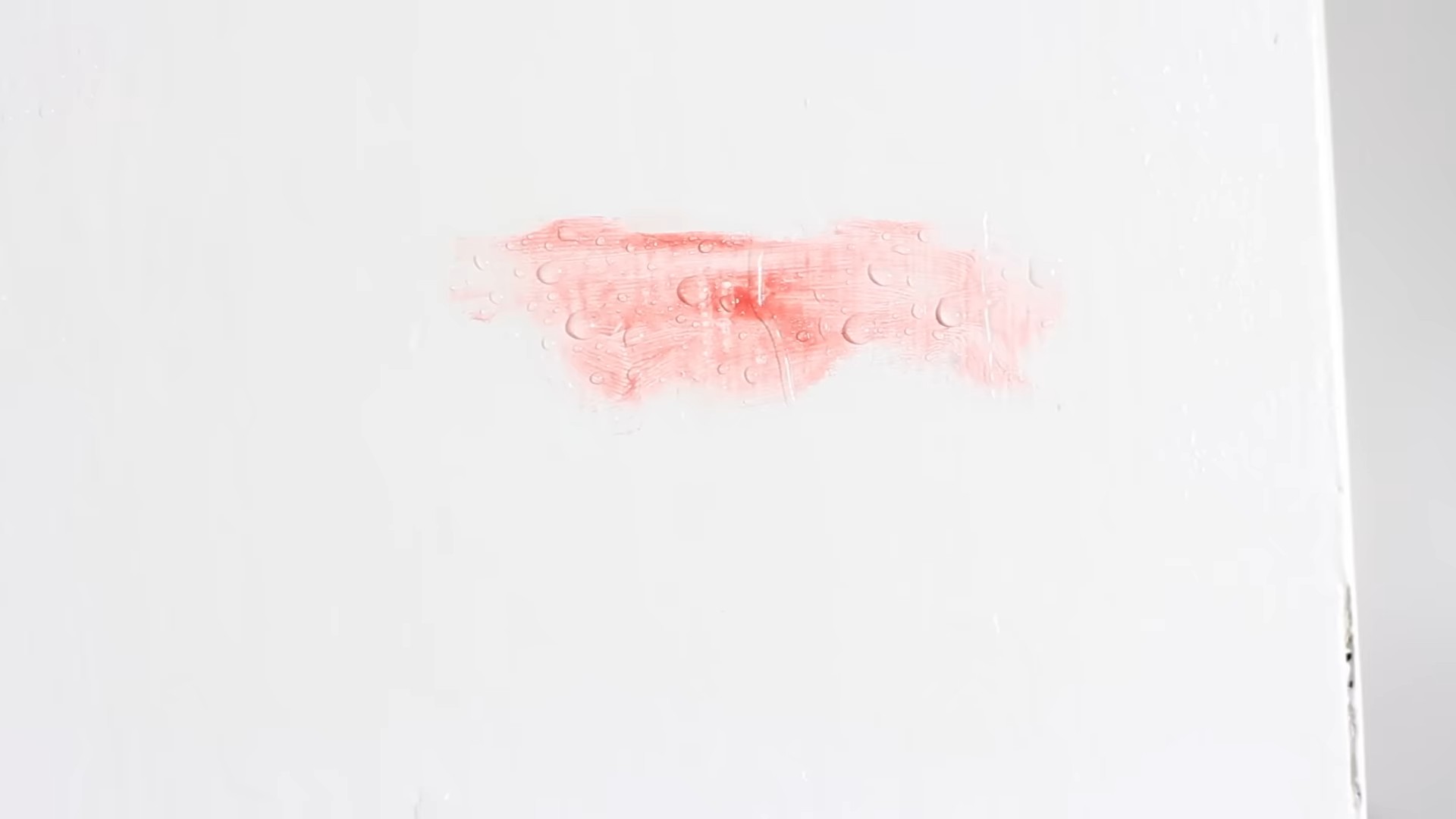
Conclusion
So, there you have it! This simple yet powerful **vinegar cleaning hacks** guide unlocks a world of possibilities for a sparkling clean home without harsh chemicals or breaking the bank. We’ve explored how this humble pantry staple can tackle everything from stubborn hard water stains in your bathroom to greasy buildup in your kitchen, and even freshen up your laundry.
But why is this DIY approach a must-try? Firstly, it’s incredibly cost-effective. A bottle of vinegar is significantly cheaper than most commercial cleaning products, allowing you to save money while achieving impressive results. Secondly, it’s environmentally friendly. By opting for vinegar, you’re reducing your reliance on chemical-laden cleaners that can harm the environment and potentially irritate your skin and respiratory system. Finally, it’s surprisingly versatile. As you’ve seen, vinegar can be used in countless ways around the house, making it a true all-purpose cleaner.
Don’t be afraid to experiment and adapt these hacks to suit your specific needs and preferences. For instance, if you find the scent of vinegar too strong, try infusing it with citrus peels (lemon, orange, or grapefruit) for a more pleasant aroma. Simply soak the peels in vinegar for a week or two, then strain before using. You can also add a few drops of your favorite essential oils, such as lavender, tea tree, or eucalyptus, for added fragrance and antibacterial benefits.
For tougher cleaning jobs, consider increasing the concentration of vinegar or combining it with other natural cleaning agents like baking soda or lemon juice. Remember to always test any cleaning solution on an inconspicuous area first to ensure it doesn’t damage the surface.
We’re confident that once you experience the cleaning power of vinegar, you’ll be hooked! It’s a simple, affordable, and eco-friendly way to keep your home clean and healthy.
Now, it’s your turn to put these **vinegar cleaning hacks** to the test. We encourage you to try them out and share your experiences with us. Let us know which hacks worked best for you, any variations you tried, and any other tips or tricks you’ve discovered along the way. Your feedback will help us continue to refine and improve this guide, making it an even more valuable resource for everyone. So, grab a bottle of vinegar and get cleaning! You’ll be amazed at the results. We are eager to hear about your success stories and any innovative ways you’ve found to utilize this amazing natural cleaner. Happy cleaning!
Frequently Asked Questions (FAQs)
Is vinegar safe to use on all surfaces?
No, vinegar is not safe to use on all surfaces. Avoid using vinegar on natural stone surfaces like marble, granite, and travertine, as the acidity can etch and damage them. It’s also best to avoid using vinegar on waxed furniture, as it can strip the wax finish. Additionally, do not use vinegar on electronics screens, as it can damage the anti-glare coating. Always test vinegar on an inconspicuous area before applying it to a larger surface.
What type of vinegar is best for cleaning?
White distilled vinegar is generally considered the best type of vinegar for cleaning. It’s clear, inexpensive, and has a relatively high acidity level, making it effective at dissolving dirt, grime, and mineral deposits. Avoid using other types of vinegar, such as apple cider vinegar or balsamic vinegar, as they may contain sugars or coloring agents that can leave behind a sticky residue or stain surfaces.
How do I get rid of the vinegar smell after cleaning?
The vinegar smell typically dissipates within a few hours. To speed up the process, you can open windows and doors to ventilate the area. You can also place a bowl of baking soda in the room to absorb odors. Alternatively, you can add a few drops of essential oils, such as lemon, lavender, or eucalyptus, to your vinegar cleaning solution to mask the vinegar smell.
Can I mix vinegar with bleach?
Never mix vinegar with bleach. This combination creates toxic chlorine gas, which can cause serious respiratory problems and even death. Always use vinegar and bleach separately, and rinse surfaces thoroughly with water after using either product.
How do I clean my coffee maker with vinegar?
To clean your coffee maker with vinegar, fill the water reservoir with a solution of equal parts white distilled vinegar and water. Run the coffee maker through a full brewing cycle. Then, run two or three cycles with fresh water to rinse away any remaining vinegar. This will help remove mineral deposits and improve the performance of your coffee maker.
Can vinegar kill mold?
Yes, vinegar can kill some types of mold. White distilled vinegar is about 80% effective in killing mold species. To kill mold with vinegar, spray undiluted vinegar onto the affected area and let it sit for an hour. Then, scrub the area with a brush and wipe it clean with a damp cloth. Be sure to address the source of the moisture that is causing the mold growth to prevent it from returning. For heavy mold infestations, professional mold remediation may be necessary.
How can I use vinegar to clean my showerhead?
To clean your showerhead with vinegar, fill a plastic bag with white distilled vinegar and secure it around the showerhead with a rubber band or twist tie, ensuring the showerhead is fully submerged in the vinegar. Let it soak for at least an hour, or preferably overnight. Remove the bag and run the shower to flush out any remaining vinegar and mineral deposits. This will help remove mineral buildup and improve water flow.
Is vinegar effective for cleaning laundry?
Yes, vinegar can be an effective laundry booster and fabric softener. Adding 1/2 cup of white distilled vinegar to your washing machine during the rinse cycle can help remove soap residue, soften fabrics, and brighten colors. Vinegar can also help eliminate odors and prevent mildew growth in your washing machine.
Can vinegar remove hard water stains?
Yes, vinegar is excellent at removing hard water stains. The acidity of vinegar dissolves the mineral deposits that cause hard water stains on faucets, showerheads, and other surfaces. To remove hard water stains, soak the affected area in vinegar for a few minutes, then scrub with a brush or sponge and rinse with water.
What are some other creative uses for vinegar in cleaning?
Vinegar can be used to clean a variety of items, including:
* Microwave: Heat a cup of vinegar and water in the microwave for a few minutes to loosen food splatters.
* Dishwasher: Pour a cup of vinegar into the bottom of the dishwasher and run a cycle to remove buildup and freshen the machine.
* Windows and mirrors: Mix equal parts vinegar and water in a spray bottle and use it to clean windows and mirrors for a streak-free shine.
* Drains: Pour 1/2 cup of baking soda down the drain, followed by 1 cup of vinegar. Let it fizz for 30 minutes, then flush with hot water.
* Cutting boards: Wipe cutting boards with vinegar to disinfect them and remove odors.
What safety precautions should I take when using vinegar for cleaning?
While vinegar is generally safe, it’s important to take a few precautions:
* Wear gloves to protect your skin, especially if you have sensitive skin.
* Avoid getting vinegar in your eyes. If you do, rinse immediately with water.
* Ensure adequate ventilation when using vinegar in enclosed spaces.
* Keep vinegar out of reach of children and pets.
* Always test vinegar on an inconspicuous area before applying it to a larger surface.
By following these safety precautions, you can safely and effectively use vinegar to clean your home.

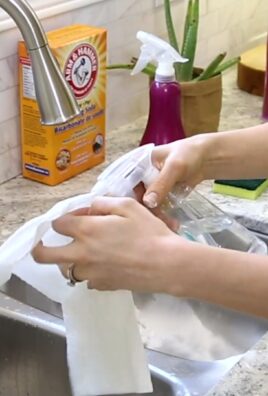
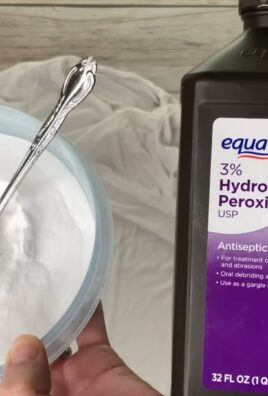
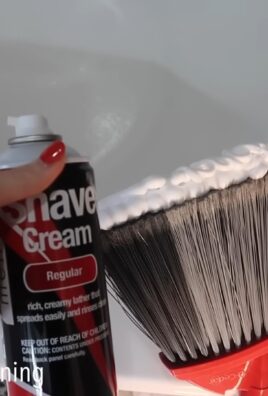
Leave a Comment